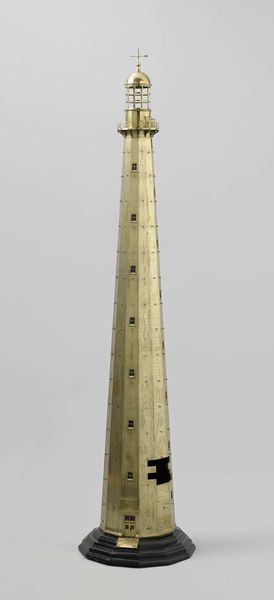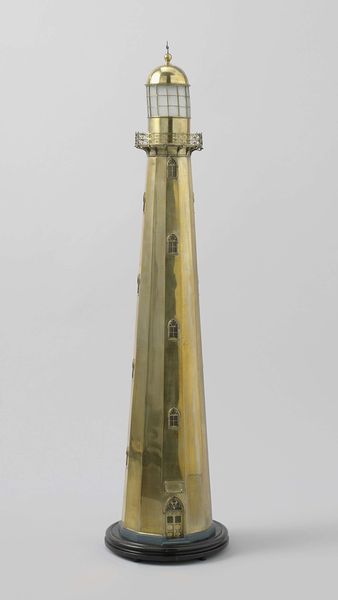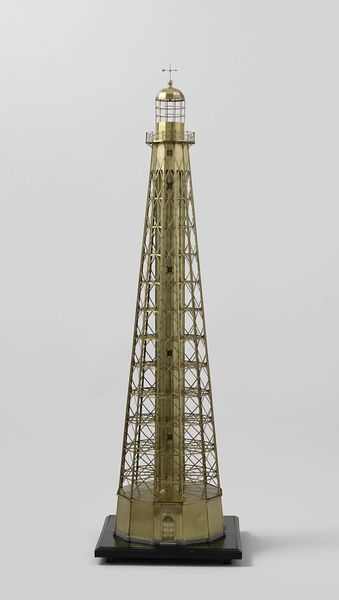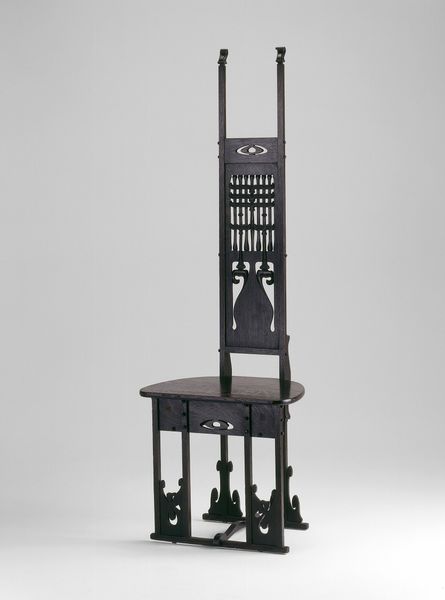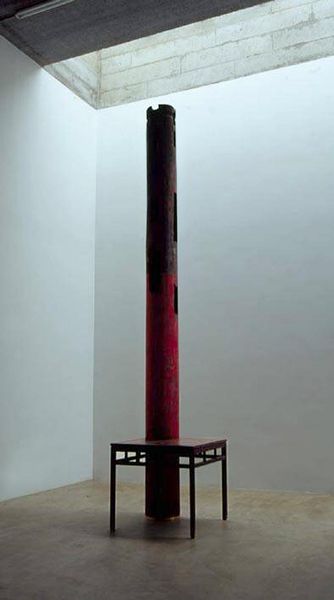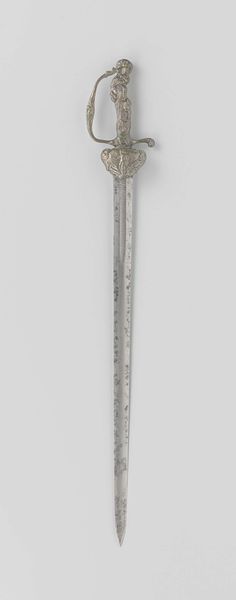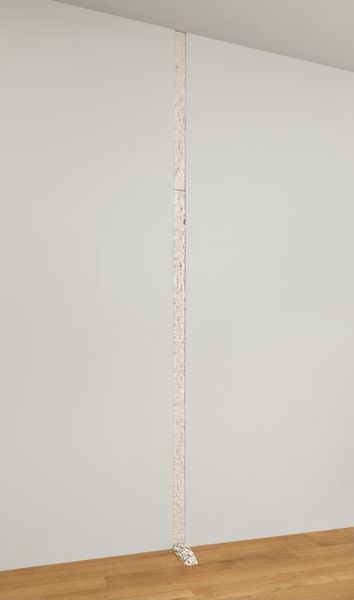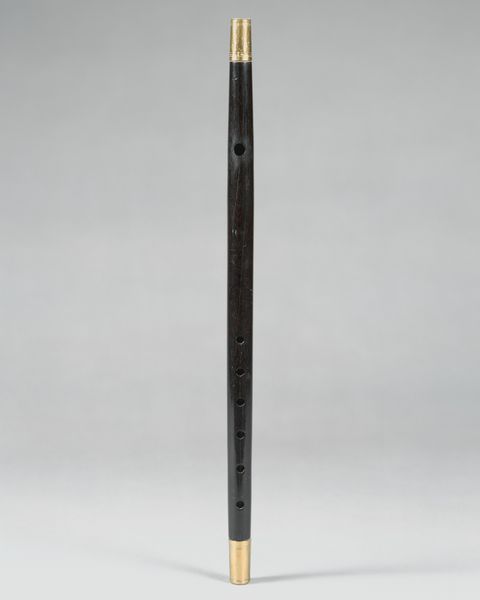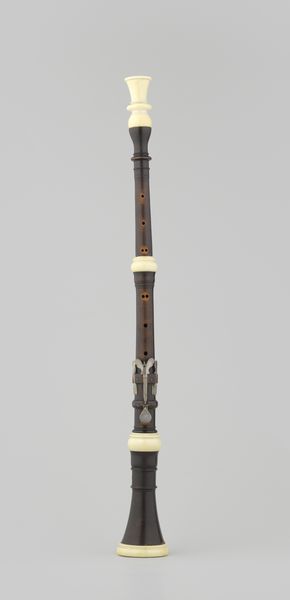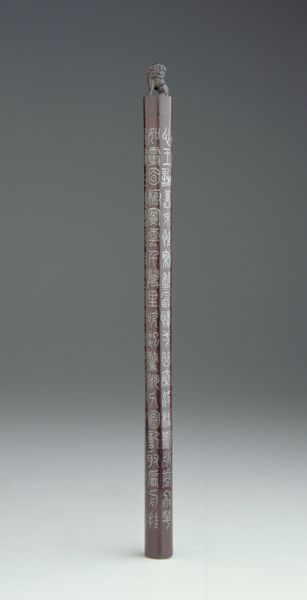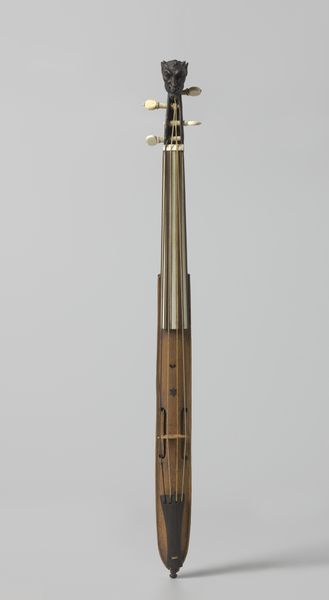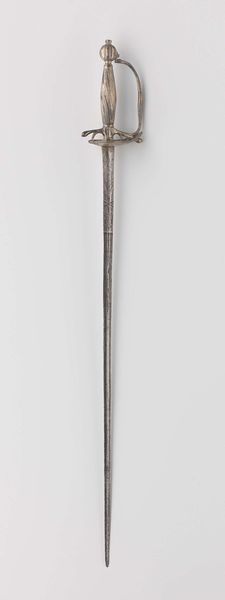
brass, metal, sculpture, architecture
#
brass
#
metal
#
geometric
#
sculpture
#
miniature
#
architecture
Dimensions: height 170.5 cm, diameter 34 cm
Copyright: Rijks Museum: Open Domain
Curator: This intriguing object is a model of the Vlakkenhoek lighthouse on Sumatra, dating back to approximately 1879 and crafted by Enthoven & Co. It's primarily composed of brass and other metals. What's your initial take on this piece? Editor: The striking verticality immediately captures attention. There's an almost obsessive quality to its clean geometric form and metallic finish. It appears simultaneously robust and delicate. Curator: Indeed. The use of brass as the primary material is significant. In the 19th century, metalworking techniques were becoming increasingly industrialized. Consider the labor involved in its manufacture; the model speaks to Dutch colonial engineering prowess but also to resource extraction. Editor: Precisely. Sumatra was, of course, part of the Dutch East Indies. How would the lighthouse construction and, by extension, this miniature representation, be seen by both the colonizers and the colonized? Its presence on the island visually asserted Dutch power. Curator: Furthermore, it highlights the dichotomy between high art and functional design. The labor and skills of the craftspeople were essential to produce this aesthetically-pleasing sculpture. Editor: And beyond pure function, there is symbolism. Light itself is knowledge, safety, and guidance. The lighthouse, in the context of colonialism, might represent a particular, one-sided viewpoint: navigation that primarily serves Dutch interests. Curator: Absolutely, and one could even suggest this detailed rendering aimed to solidify a specific colonial vision and justify that socio-political agenda for its local, but also global viewers. Editor: Considering the miniaturized format, who would have commissioned or purchased it? Was this piece perhaps intended for educational purposes or, even more subtly, as colonial propaganda back in Europe? Curator: Perhaps it was used as a demonstration piece, a showcase of Enthoven & Co.'s manufacturing capabilities and their participation in larger infrastructure projects in the colony. Editor: This miniature lighthouse tells an intriguing story that transcends pure aesthetics or engineering ingenuity. The social and colonial dynamics embedded within its metal frame really invite introspection. Curator: Absolutely. Reflecting on its composition, the meticulous nature of its craftsmanship reveals so much about production techniques, societal norms, and the global flow of resources in that era.
Comments
rijksmuseum almost 2 years ago
⋮
The full-scale, 60-metre-high version of this lighthouse was erected at Vlakkenhoek, on the southwest point of Sumatra. The tower was built in The Hague by Enthoven & Co., then shipped to Sumatra. The strengthof the cast-iron structure was proven during the 1883 volcano eruption of Krakatoa; only the lighthouse withstood the tsunami that devastated everything else.
Join the conversation
Join millions of artists and users on Artera today and experience the ultimate creative platform.
